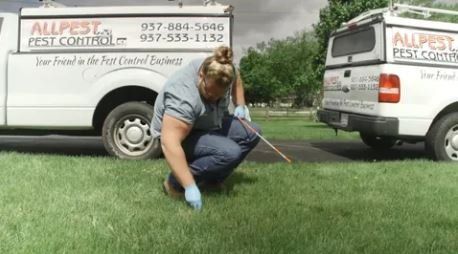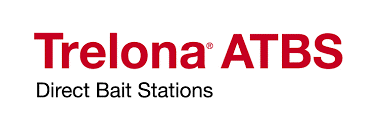Mole Removal
Proudly serving Preble, Darke, Montgomery, & Miami Counties
Active year around, moles can be very destructive to your lawn and garden. They are insectivores and will eat earthworms, grubs, and other ground insects. A female mole will have as many as 5 young every spring. They can grow up to 6-7 inches in length and have large, clawed feet to help them tunnel underground in search of food.
Where Can Moles Be Found?
The mole generally found in the Miami Valley is called the eastern mole. They prefer soft moist soil of lawns, gardens, backyards, and unused pastures. They'll more likely stay away from hard or rocky areas. soil that is high in clay and soil that tends to be too dry or very wet.

Solve Your Pest Problem Today! (937) 884-5646
What Can I Do To Get Rid Of Moles?
The professionals here at AllPest Pest Control understand that eradicating moles from your lawn is very important, which requires knowing how a moles moves through their traveling tunnels and knowing where to place the bait. Our mole control method has proven to be highly effective in both lab and field efficacy studies. This method involves strategically placing medicated worms that resemble the mole’s favorite food - earthworms – throughout their network tunnels.
How Much Damage Can Moles Do?
Moles are a big nuisance in your lawn or garden areas. their underground network tunneling can make mowing your lawn very difficult and sometimes even damage you mowers blades. although they don't eat the grass roots or any other vegetation they disturb it ripping the grass roots while excavating their tunnels and kill your grass. Moles have the ability to burrow up 200 feet per day, or 80 feet per minute.
Mole Control
Talpirid is the product of choice for professional pest control operators. Bromethalin kills and therefore controls existing mole populations with a single treatment. Talpirid mimics the moles' favorite food source which is earthworms and death of the pest will occur within a few days of ingestion.
A licensed pest control operator will inspect for active tunnels, install the bait and monitor future activity. A normal treatment cycle involves a minimum of two visits. The initial tunnel inspection and baiting is followed by a second treatment within 7-10 days. Neighbors with untreated populations may allow for re-infestation of active feeding tunnels on your property.
Brands We Use



Counties We Service
Preble County • Darke County • Montgomery County • Miami County
AllPest Pest Control & Wildlife Removal
6866 Georgetown Verona Rd
Lewisburg, OH 45338
(937) 884-5646
oswaltallpest@gmail.com
